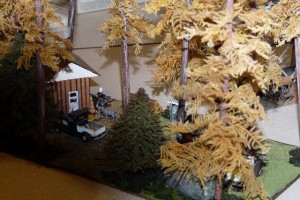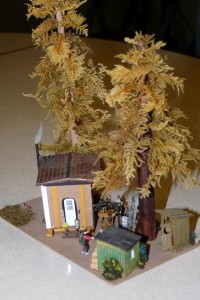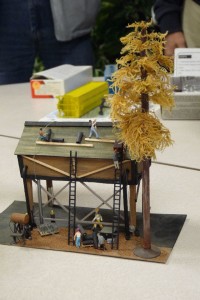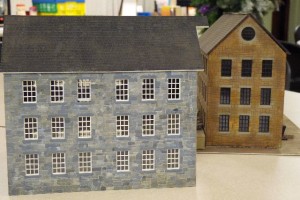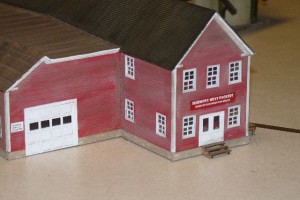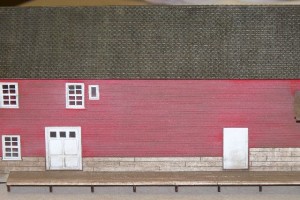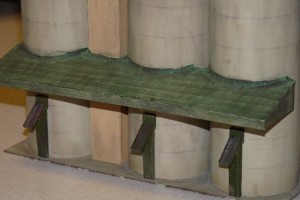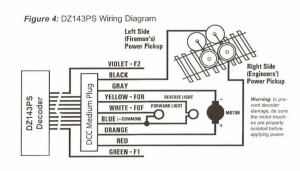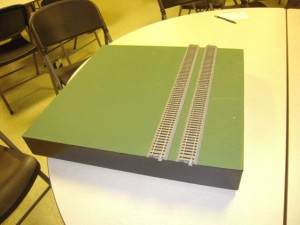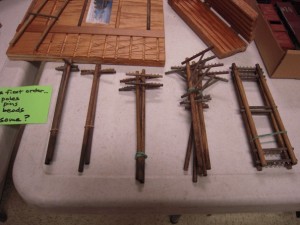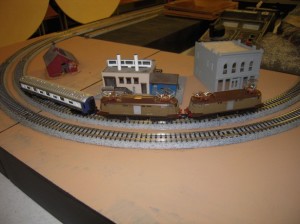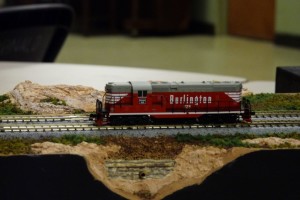By Jeff Moorman, Photos By Jeff Moorman
Please come join us this Thursday (May 3) when our clinic topic will be railroading in Cuba. Last month Bobj returned from a trip to the island. As he was one of the guides on a railroad tour, he was privy to all sorts of good information which he will share with us.
Also the folks from the upcoming National Narrow Gauge Convention will be stopping by to make a presentation. This convention is being held September 12-15 in Bellevue. If you have never been to a National Narrow Gauge event, you are in for a treat. There is really some fantastic modeling being displayed and the techniques are applicable most anywhere. Think about it – there is no such thing as a narrow gauge tree.
Last month’s clinic covered scratch building turnouts with Stu R. And when we say scratch, we mean scratch. Stu goes so far as cutting his own wood ties. He also has made his own set of angle gauges for the turnout sizes he needs. Stu says he worked out the geometry by studying prototype books on track laying and using CADRail to lay out templates.
Stu started with a primer on hand laying track. His technique is pretty conventional. First he lays the ties and makes sure they are level. He coats the bottom of the rail with contact cement and clamps it down (or uses heavy weights) until it dries. After that he uses a few spikes to make sure everything stays put. He does one rail at a time. Stu has several handmade jigs used for getting tie spacing correct in different situations, like regular track, bridge decks, and under turnouts.
Unfortunately my notes are not detailed enough to explain exactly how Stu builds the turnouts. I do recall that when he does something with a flangeway, he fills the whole assembly with solder. Then he uses a section of hacksaw blade to “cut” the flangeway in the solder. This appears easier than techniques I have seen that try keep that area clear throughout construction. And it seems to result in a very robust assembly.
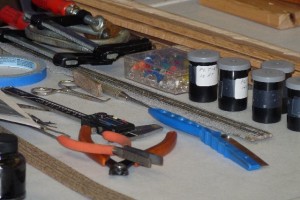
Stu's Tools (at least some of them)
Rob J brought an OmNi-Rail mockup, which is a new N gauge modular standard. He talked a little about the standard and why some folks think it is needed. The mockup was available for further scrutiny during show and tell.
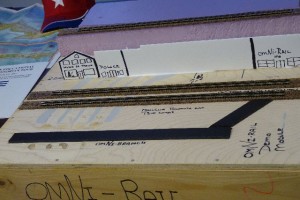
OmNi-Rail Module Mockup
Bobj had a few mementos from Cuba on display. Of course we will learn more about them at May’s meeting. John B brought some of his hand built turnouts (in HO). He had a fascinating way of holding the points in gauge using a styrene throwbar with a notched spreader glued on top. He said he first learned about this method at a clinic some years ago.
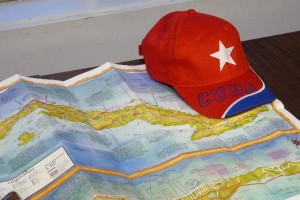
From Bobj's Cuba Trip
In talking to John and Stu I learned you cannot always expect a perfect turnout. From time to time one of your efforts just will not function properly and you should expect this will occur. The best solution is to just build another one.
We meet at the Ronald United Methodist Church, 17839 Aurora Avenue North, Shoreline, WA. That is on the west side of Aurora (State Route 99) between 175th and 185th Streets and more specifically, between the Cadillac dealer on the south and Deseret Industries to the north. You can no longer make cross-traffic turns on Aurora, so you need to be going southbound (so you can make a right-hand turn into the church driveway immediately after passing the Deseret location).
Meetings are the first Thursday of each month, except July and August. In June we usually do a tour. For regular meetings enter the lower level of the church from the parking lot at the rear. Doors open around 7:00 PM and the program starts about 7:30.
Remember the next meeting is May 3.
Hope to see you there or at least sometime on down the line.




